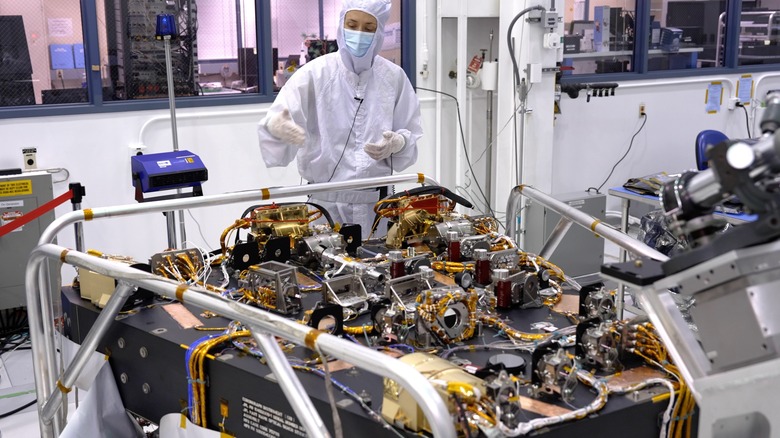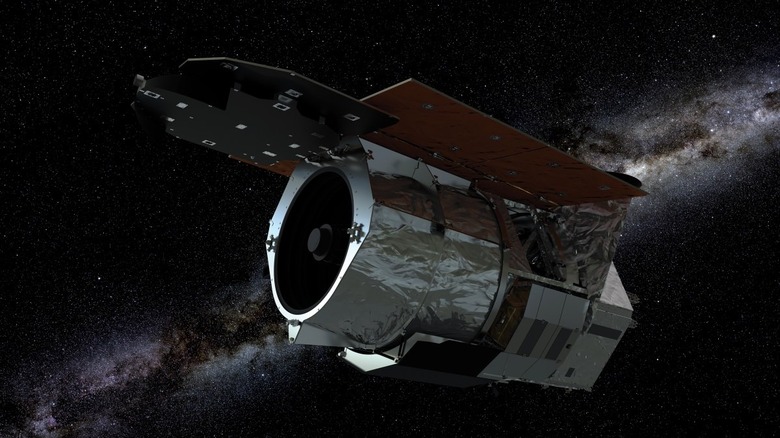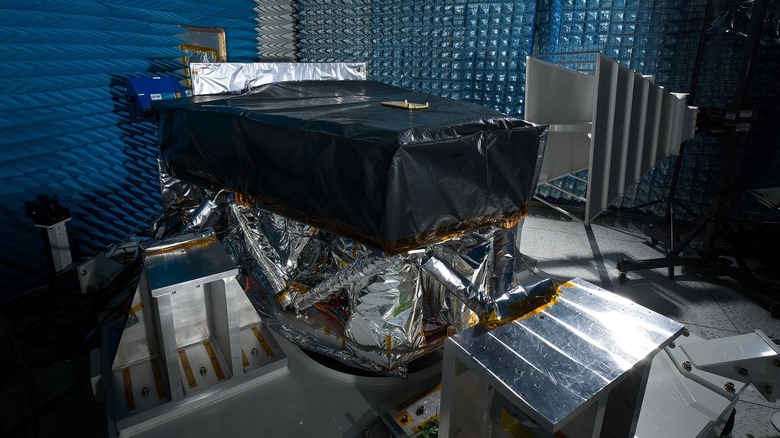NASA's Newest Space Telescope Program Plans To Find 100,000 Exoplanets: Here's How
With the James Webb Space Telescope launched in 2021 and the Hubble Space Telescope still in operation after more than 30 years, you might think that NASA has enough space telescopes. But each one has a special function, and is useful for different operations. Webb is great for observing some of the most distant galaxies known, and Hubble captures stunning images of objects like nebulae or galaxies. Now, NASA wants a telescope specially for discovering exoplanets.
NASA's next big launch will be the Nancy Grace Roman Space Telescope, set for 2027. Originally known as the Wide Field Infrared Survey Telescope or WFIRST, the telescope's name was changed in 2020 to honor Nancy Grace Roman, a renowned astronomer who worked as NASA's first Chief of Astronomy in the 1960s and 1970s.
The telescope will study the evolution of the universe, particularly to discover exoplanets. Exoplanets, or planets outside of our solar system, are a huge topic in astronomy, and Roman will perform a survey of the sky to search for hundreds of thousands of them.
One feature will make Roman special, and unlike previous exoplanet hunting tools like NASA's Kepler or Transiting Exoplanet Survey Satellite (TESS) missions. It will have a special instrument called a coronagraph that will allow it to see exoplanets directly.
What makes Roman's observations of exoplanets special
The reason that exoplanets are so hard to find is that they are very distant and, compared to stars, they are much smaller and dimmer. Unlike stars, planets do not glow themselves, so the only light planets give off is what they reflect from stars. The challenge of seeing this reflected light is that not only is it dim, but it is also located close to the much brighter light source of the star.
It's like when you try to take a picture with your phone. If there's a very bright light source like a lamp in your photo, it will blow out the image and make it impossible to see other objects near the lamp.
That's why exoplanets are most commonly discovered not through direct observation, but through observation of their host stars. In one common method, called the transit method, a telescope is used to observe a star, and when a planet passes in front of the star it causes a slight drop in brightness. The telescope detects this drop in brightness, and if it happens regularly then scientists can infer that there must be a planet there orbiting on a particular schedule.
Roman will be different though. As well as using methods involving observing stars, it will be also able to observe exoplanets directly. To do this, it needs a special instrument which is capable of blocking out the bright light from the stars to let the planets shine through. That instrument is called a coronagraph.
How Roman's coronagraph works
The Roman coronagraph is a system of prisms, masks, and detectors that works together to block light from a bright source so it can observe fainter sources. Included in the hardware is a special mirror which can be flexed or deformed to allow for any tiny flaws in the telescope's systems, allowing it to make extremely accurate measurements. When pointed toward a star system thought to host exoplanets, the instrument essentially drops a mask over the star to block its light. It can then detect the reflected light from exoplanets in the system — even if those exoplanets are orbiting close to the star.
The mirrors make the instrument much more sensitive to those used in previous space telescopes, and the fact that Roman will be in space means it doesn't have to see through the water vapor in Earth's atmosphere. It should be able to detect a huge number of new exoplanets — up to 100,000 of them according to a study in "Publications of the Astronomical Society of the Pacific."
The coronagraph instrument has been through a series of tests done on the ground before the telescope is launched, making sure the instrument is compatible with the rest of the equipment on board.
"This is such an important and nerve-wracking stage of building a spacecraft instrument, testing whether or not everything works as intended," said NASA Jet Propulsion Laboratory's Feng Zhao, deputy project manager for the Roman Coronagraph. "But we have an amazing team who built this thing, and it passed the electrical components tests with flying colors."
How the coronagraph was tested
The reason that the instrument had to go through such careful electrical testing was because of a phenomenon called electromagnetic interference. When electrical currents pass through the telescope's systems, these give off small signals, which could be picked up as light by the telescope's cameras. Even this tiny bit of interference could jeopardize the signals coming from the planets that Roman is trying to detect. Or the signals from the coronagraph could cause interference with other instruments on board.
To check for this, the instrument was put in a special isolation chamber and turned on, to see what kinds of radio or electrical signals it gave off. The team also checked whether there was noise visible in the camera images.
"The electric fields we generate with the antennas are about the same strength as what's generated by a computer screen," explained the Roman Coronagraph electrical systems engineer at JPL, Clement Gaidon. "That's a pretty benign level, all things considered, but we have very sensitive hardware onboard. Overall, the instrument did a fantastic job navigating across the electromagnetic waves."
The coronagraph is a technology test, meaning it is intended to test out whether this approach to identifying exoplanets will work in practice. If it does, it paves the way for future telescopes like the planned Habitable Worlds Observatory to use similar technology and discover even more exoplanets in future. Now, the coronagraph needs to be integrated into the telescope, and lots more testing performed to check it all works as planned. NASA is planning to launch Roman in 2027.


